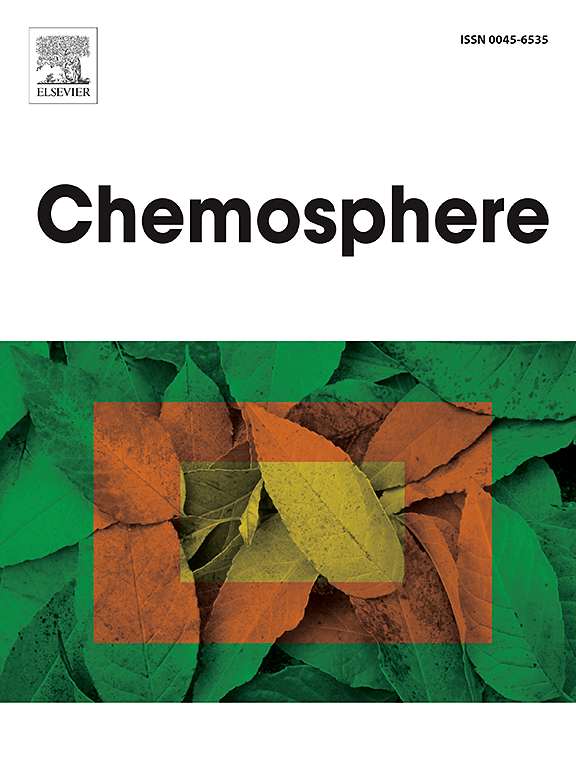Sources and characterisation of organic pollutants in airborne particle fractions in an urban area, Bab Ezzaour, Algeria: A focus on n-alkanes and polar substances
IF 8.1
2区 环境科学与生态学
Q1 ENVIRONMENTAL SCIENCES
引用次数: 0
Abstract
The main objective of this study was to determine the loads, sources and behaviour of n-alkanes and several polar organics, including plasticisers (phthalates, [bis]2-ethylhexyl adipate), psychotropic substances (both legal and illegal) and the mosquito repellent DEET, in the atmosphere of the city of Bab Ezzouar, northern Algeria. Particulate matter was classified into three fractions according to aerodynamic diameter: coarse (PM10-2.5), fine (PM2.5-1) and ultrafine (PM1-0.01) particles. s. Particulate samples were collected from the atmosphere using a high-volume sampler (HVS), and target compounds were characterised using gas chromatography coupled with mass spectrometry detection (GC-MS) over a one-year period (January 2018 to January 2019). In detail, 41 organic compounds were analysed. The total content of n-alkanes, considering the three particle size fractions, was found to be 43.8 ± 18.0 ng/m3, while the phthalate reached 27.4 ± 13.6 ng/m3. The incremental risk to human health was assessed using a model in accordance with USEPA guidelines. The results indicate that the carcinogenic risk for BBP and DEHP were 1.49 × 10−10 and 7.72 × 10−8, respectively.
The study of psychotropic substances revealed the occurrence of significant concentrations of nicotine and caffeine (up to tens of ng/m3), accompanied by cotinine and cannabinol. According to principal component analysis and three molecular indices (i.e. carbon preference index [CPI], carbon number of n-alkane maximum concentration [Cmax] and natural wax percentage [NW%]), PVC combustion and vehicle exhaust were the main sources of organic pollutants associated with airborne particles at Bab Ezzouar. Tabacco smoke and biogenic emissions (microorganisms/bacteria and high vegetation) contribute less to the formation of organic contaminants, although they cannot be ignored.

求助全文
约1分钟内获得全文
求助全文
来源期刊

Chemosphere
环境科学-环境科学
CiteScore
15.80
自引率
8.00%
发文量
4975
审稿时长
3.4 months
期刊介绍:
Chemosphere, being an international multidisciplinary journal, is dedicated to publishing original communications and review articles on chemicals in the environment. The scope covers a wide range of topics, including the identification, quantification, behavior, fate, toxicology, treatment, and remediation of chemicals in the bio-, hydro-, litho-, and atmosphere, ensuring the broad dissemination of research in this field.
 求助内容:
求助内容: 应助结果提醒方式:
应助结果提醒方式:


